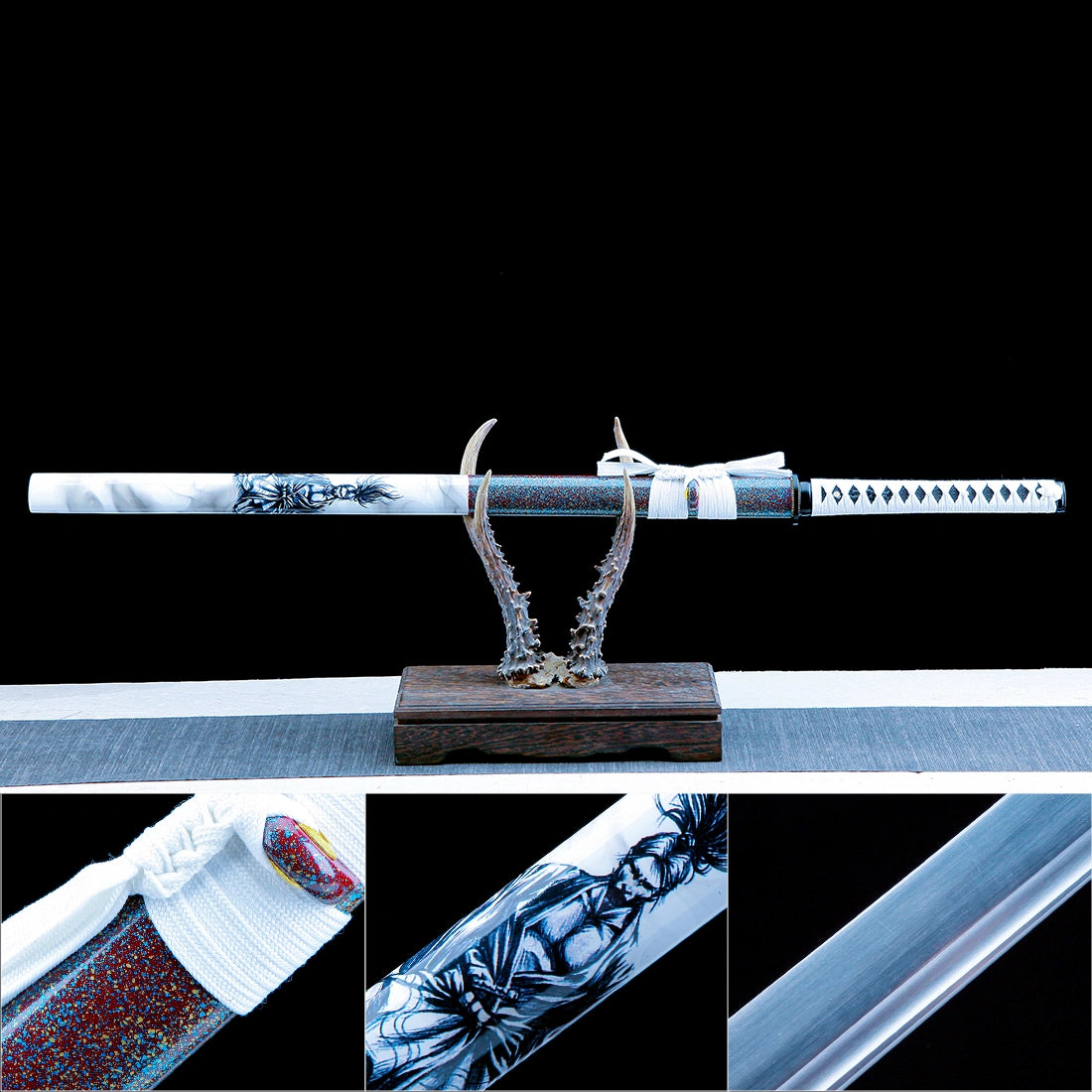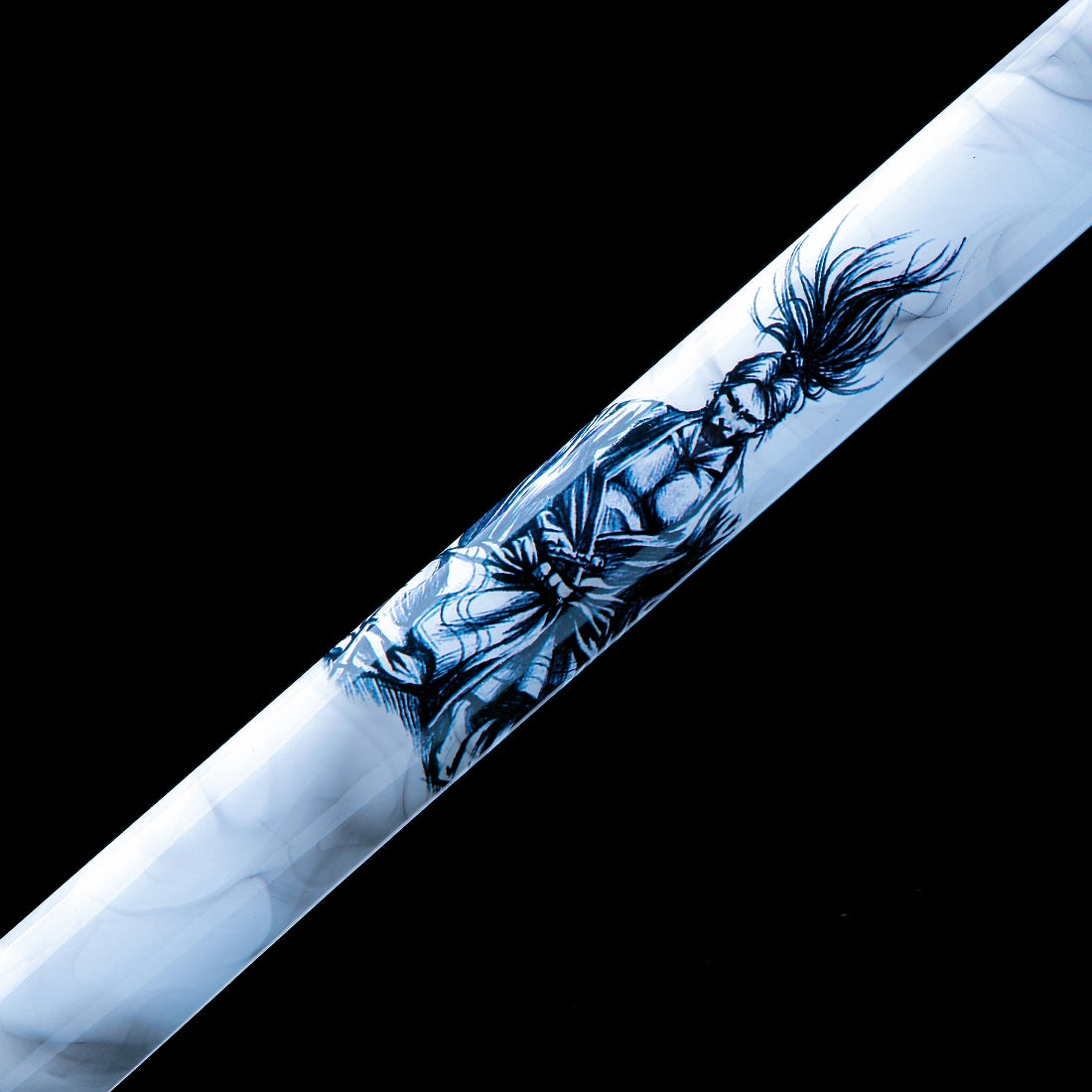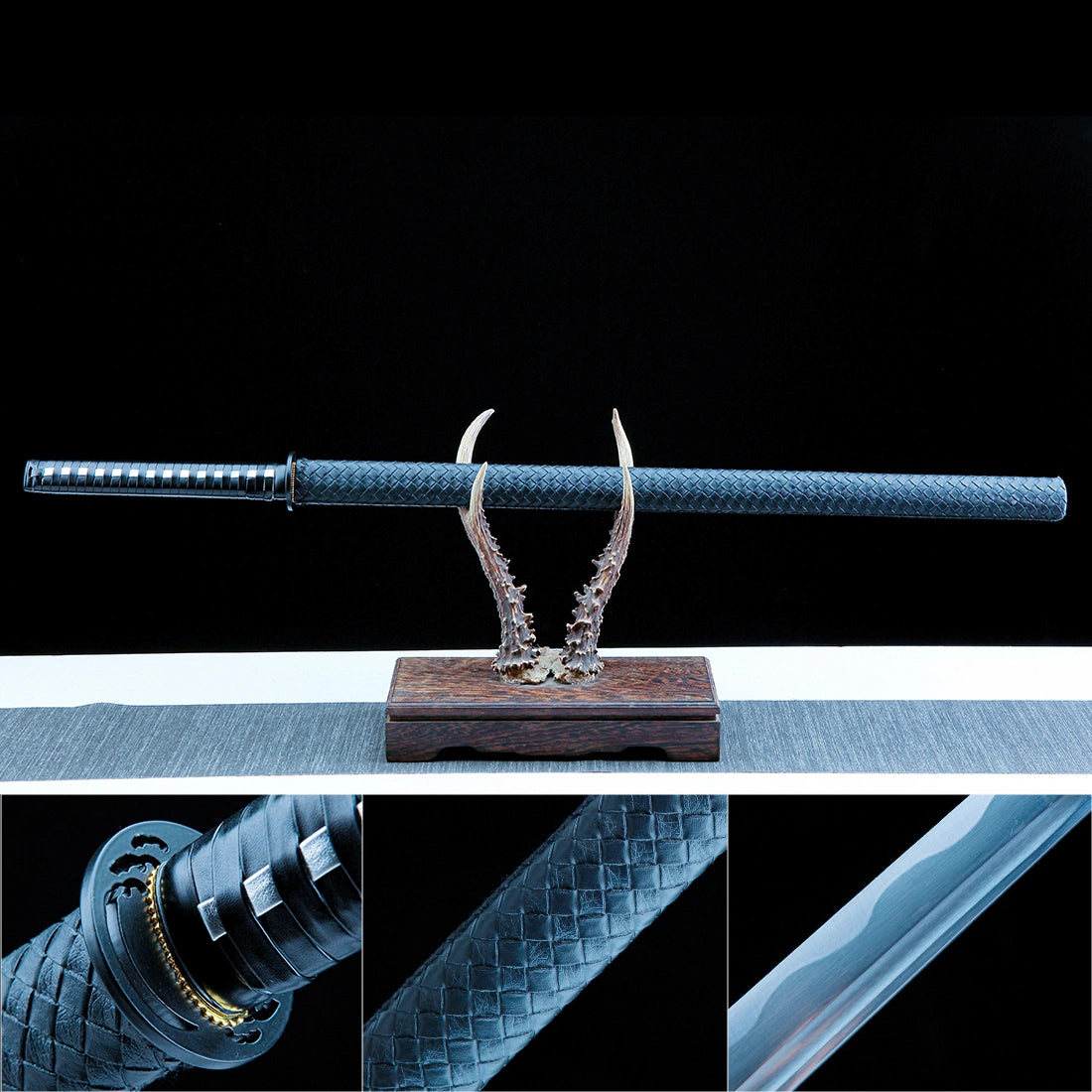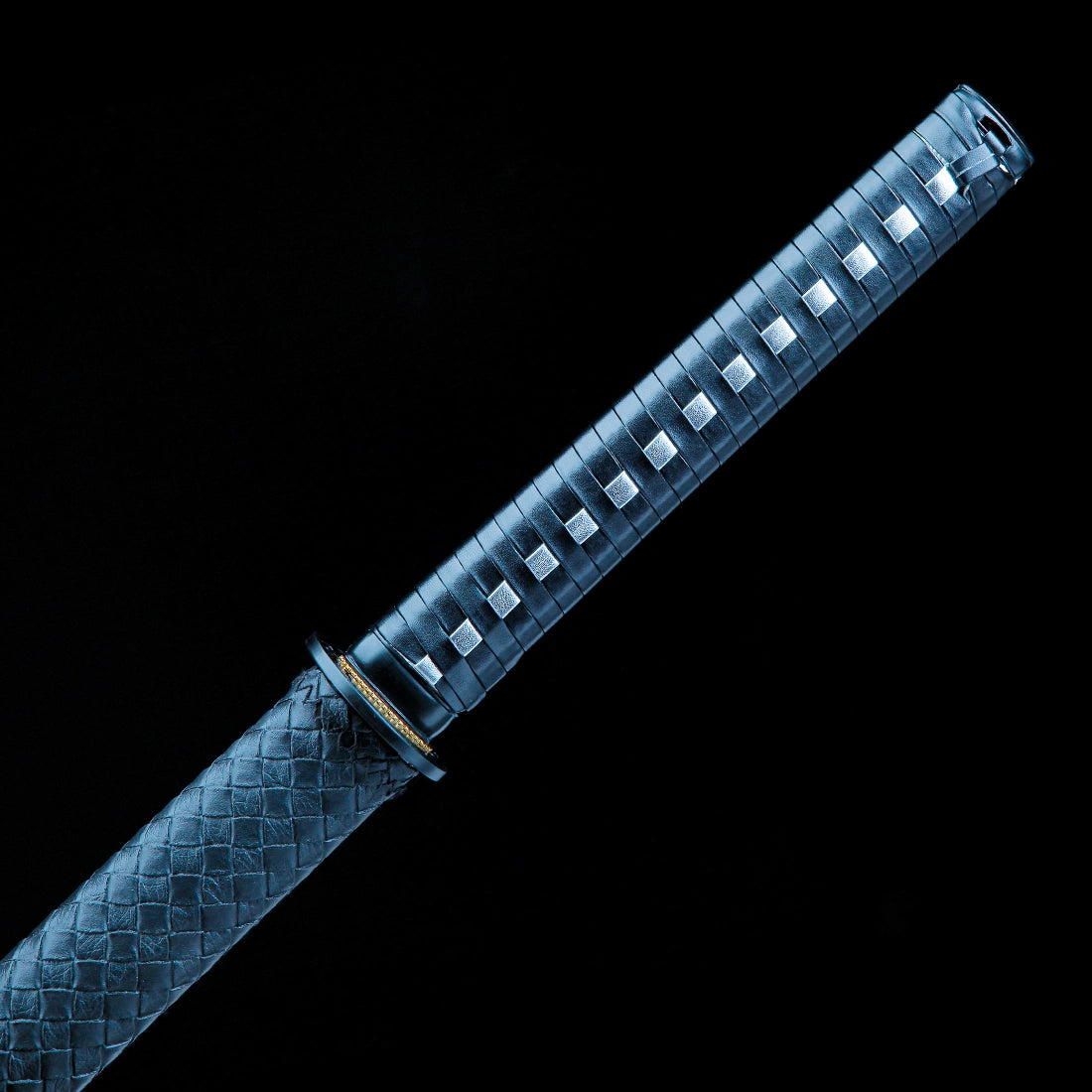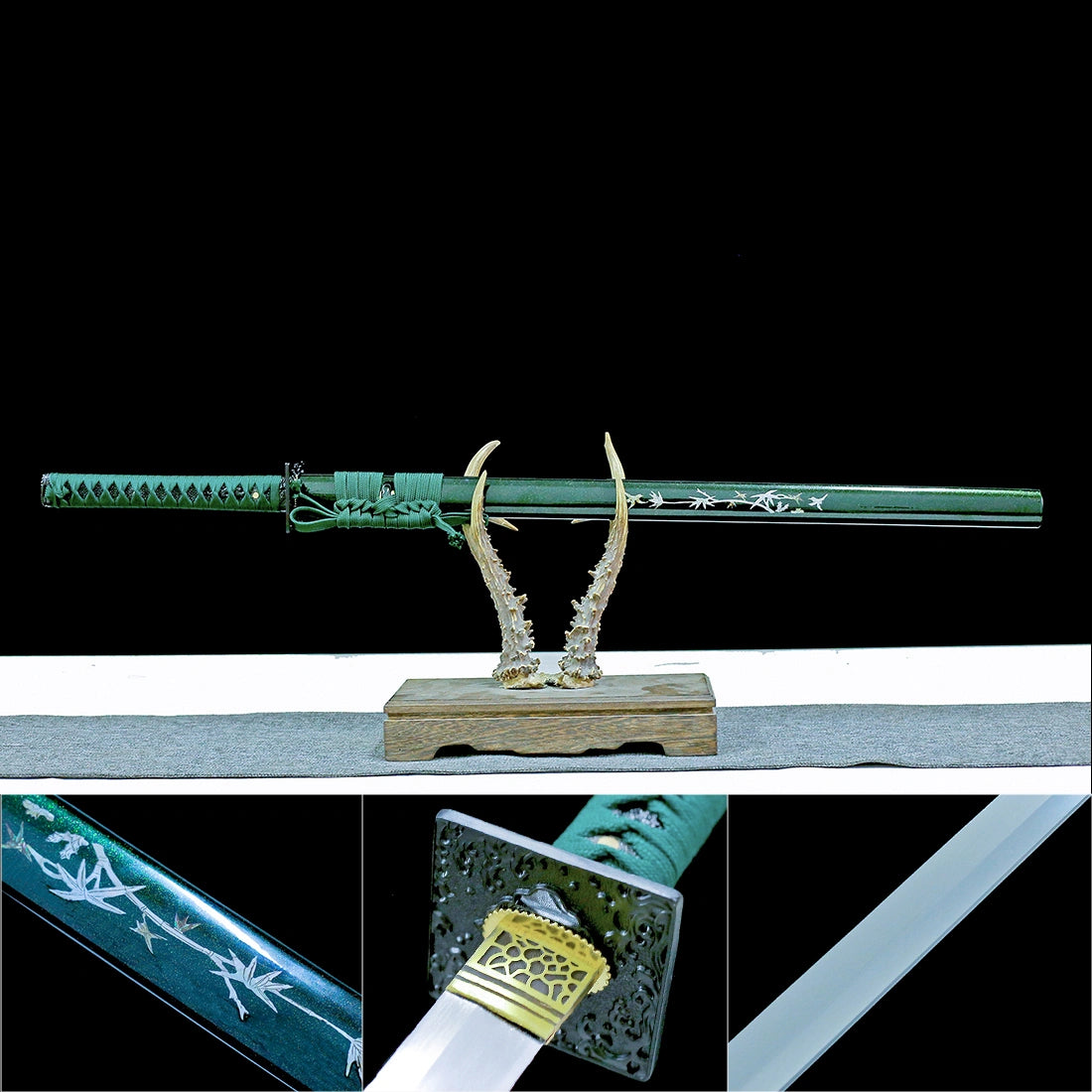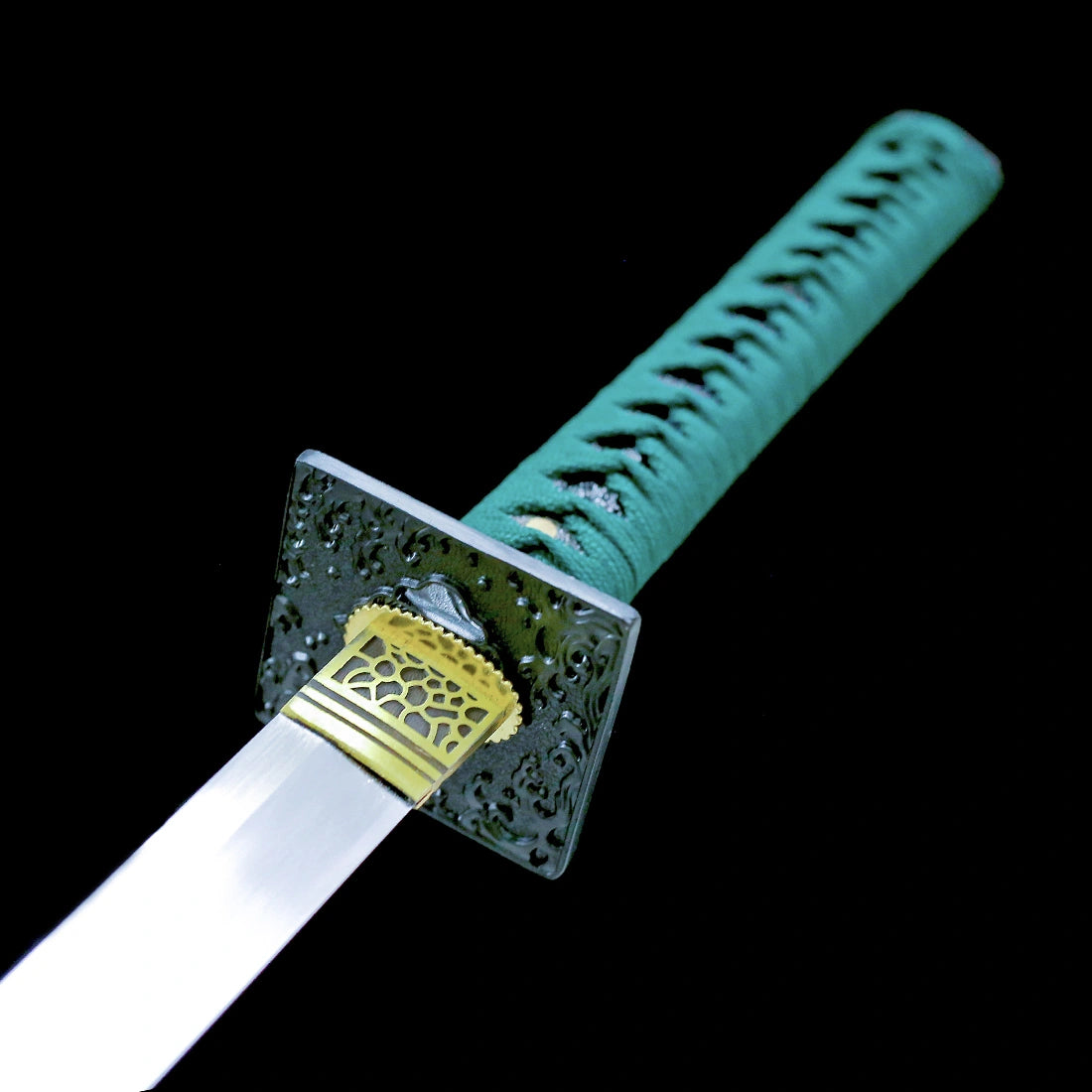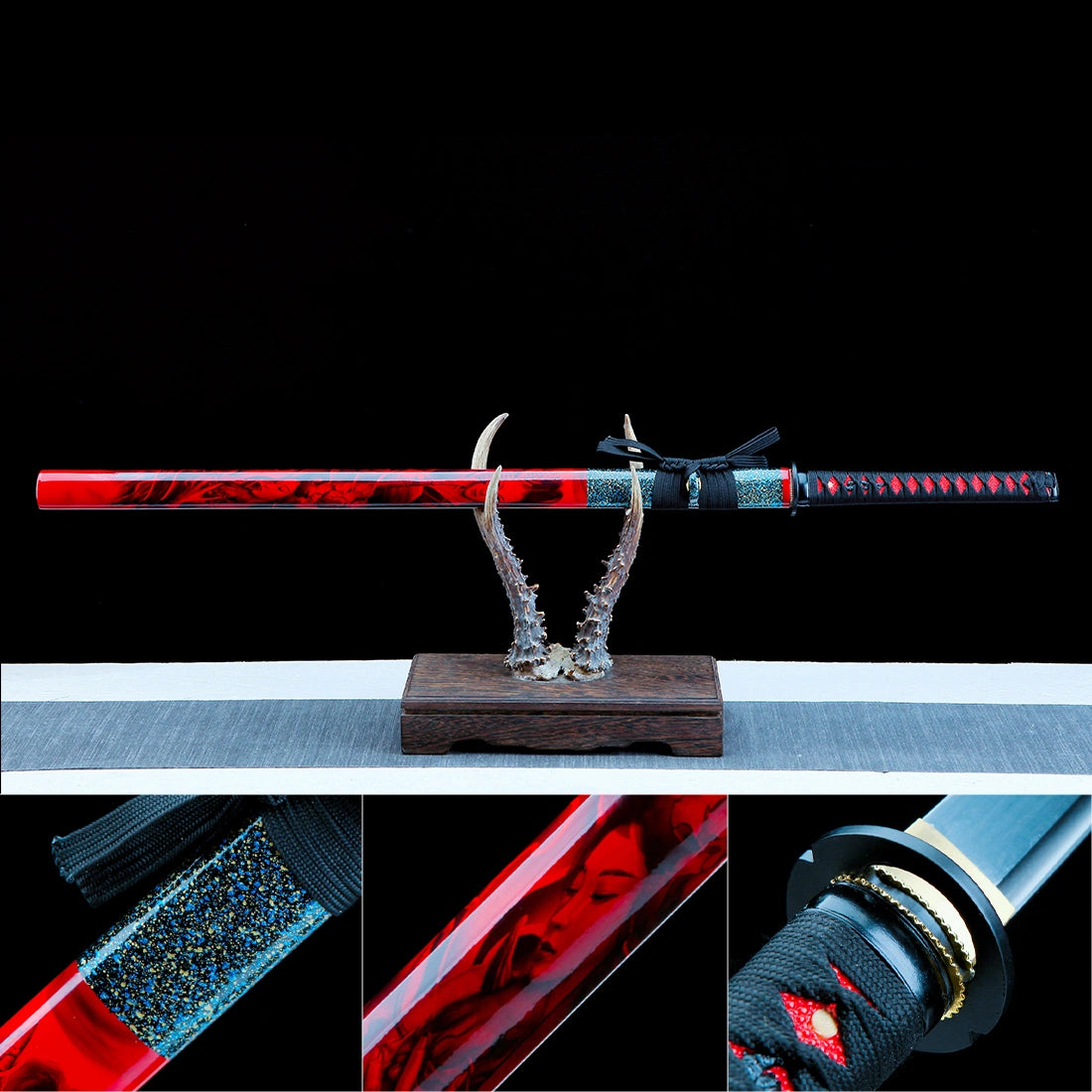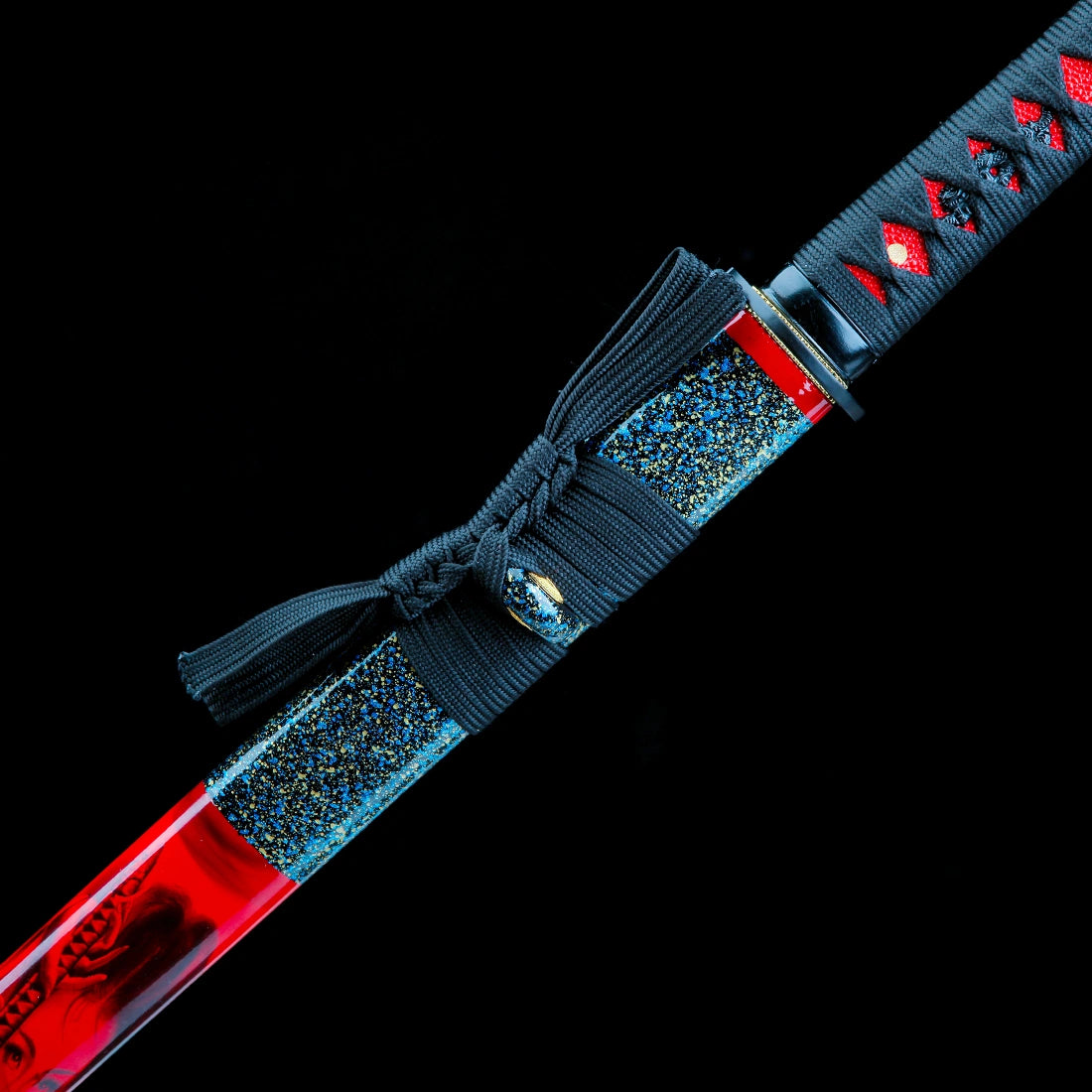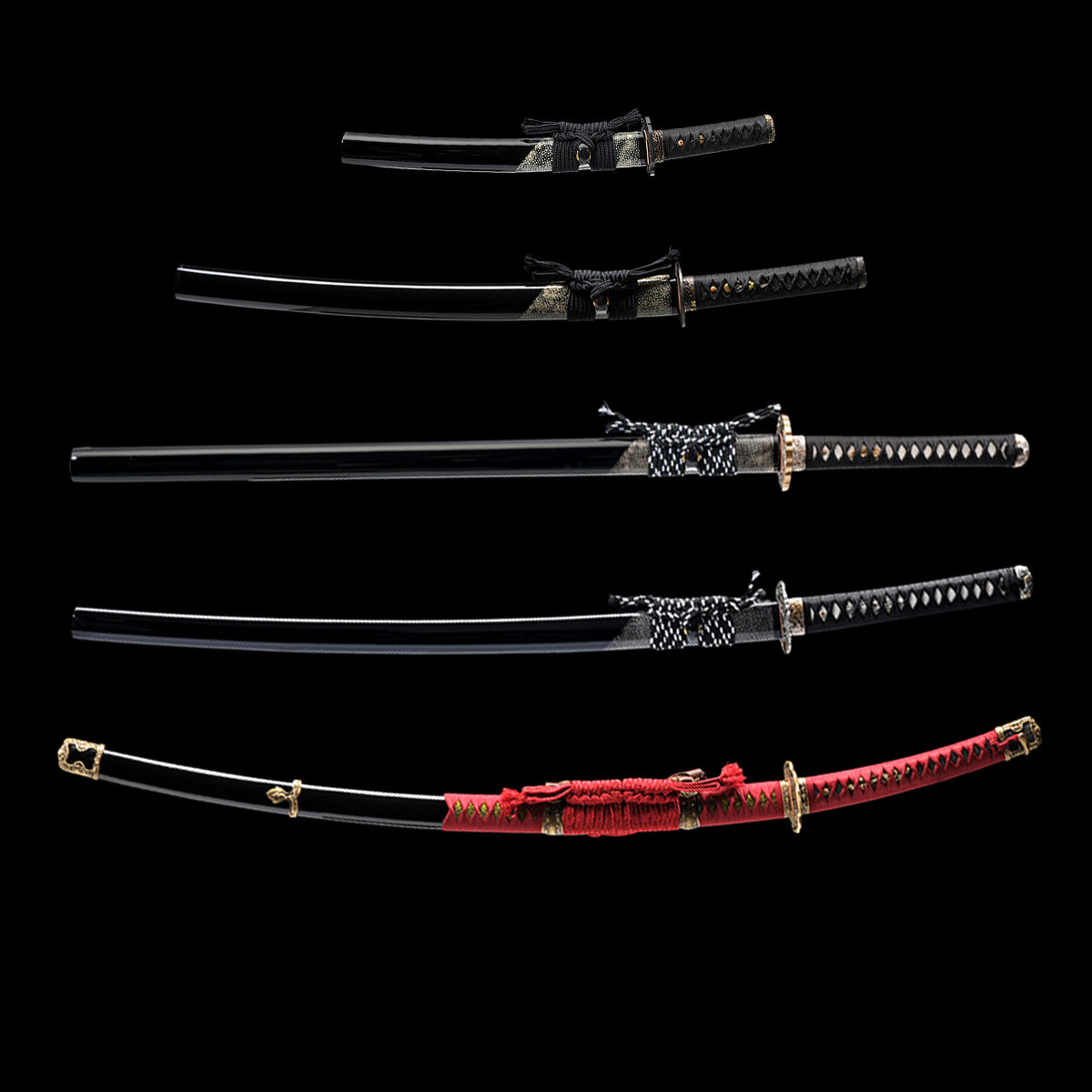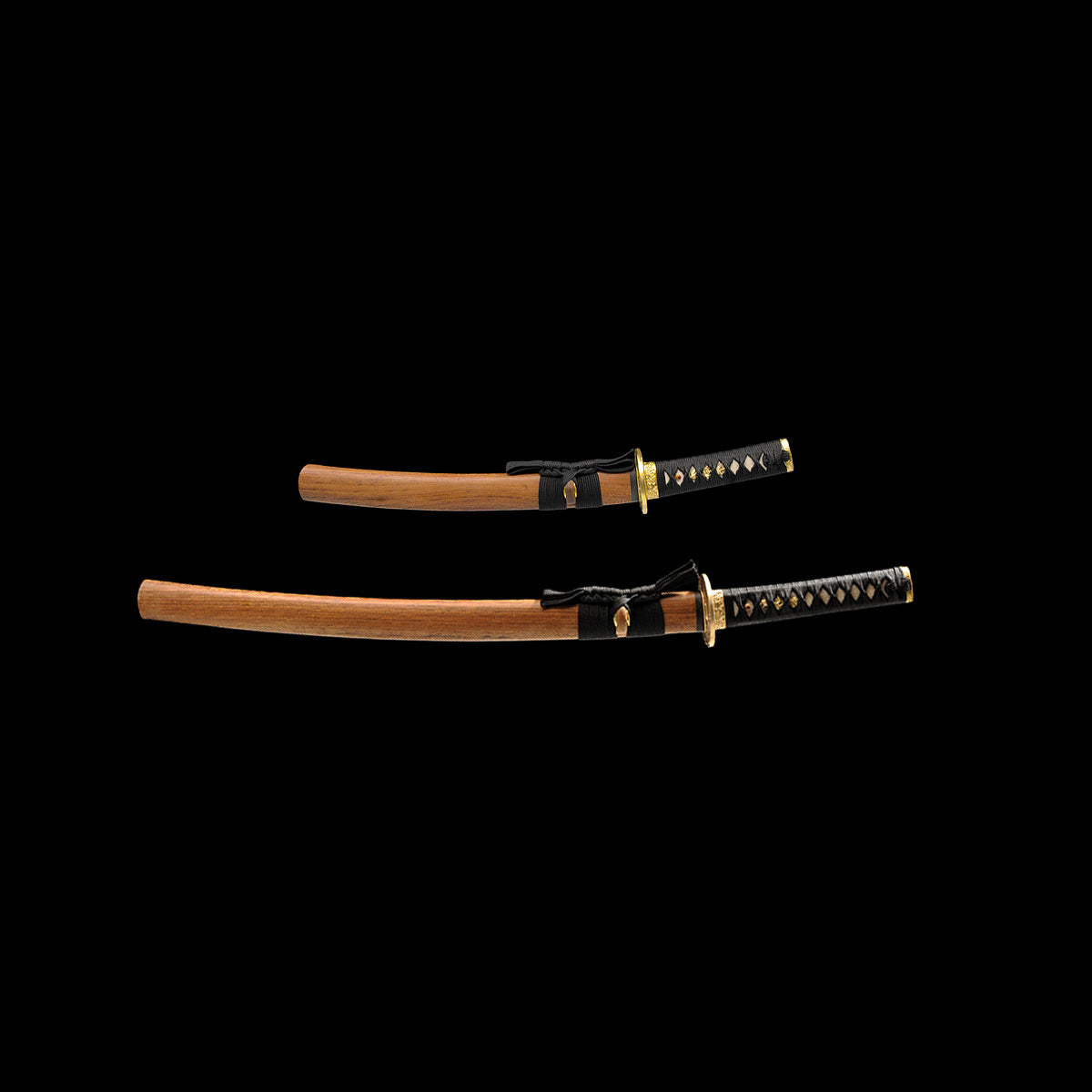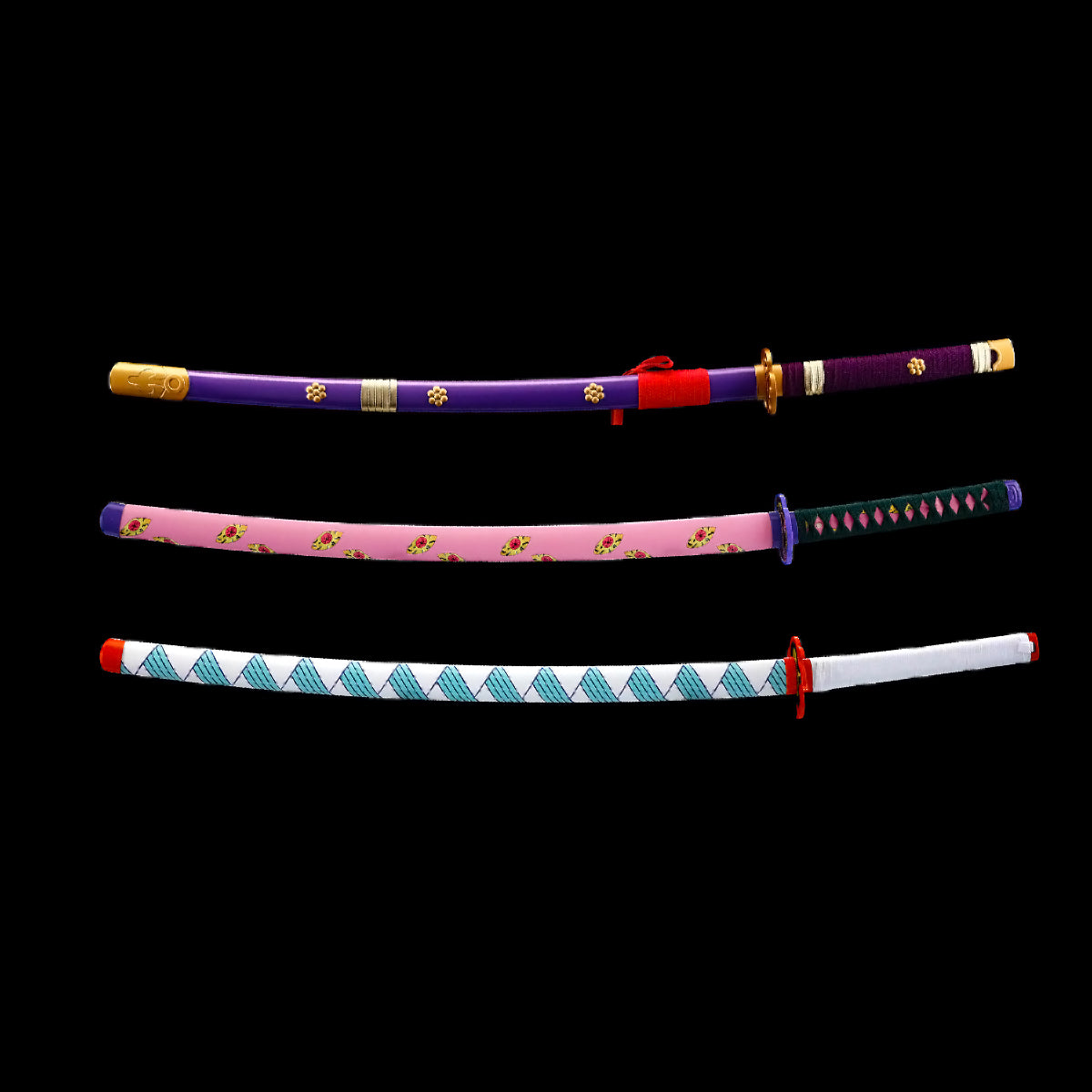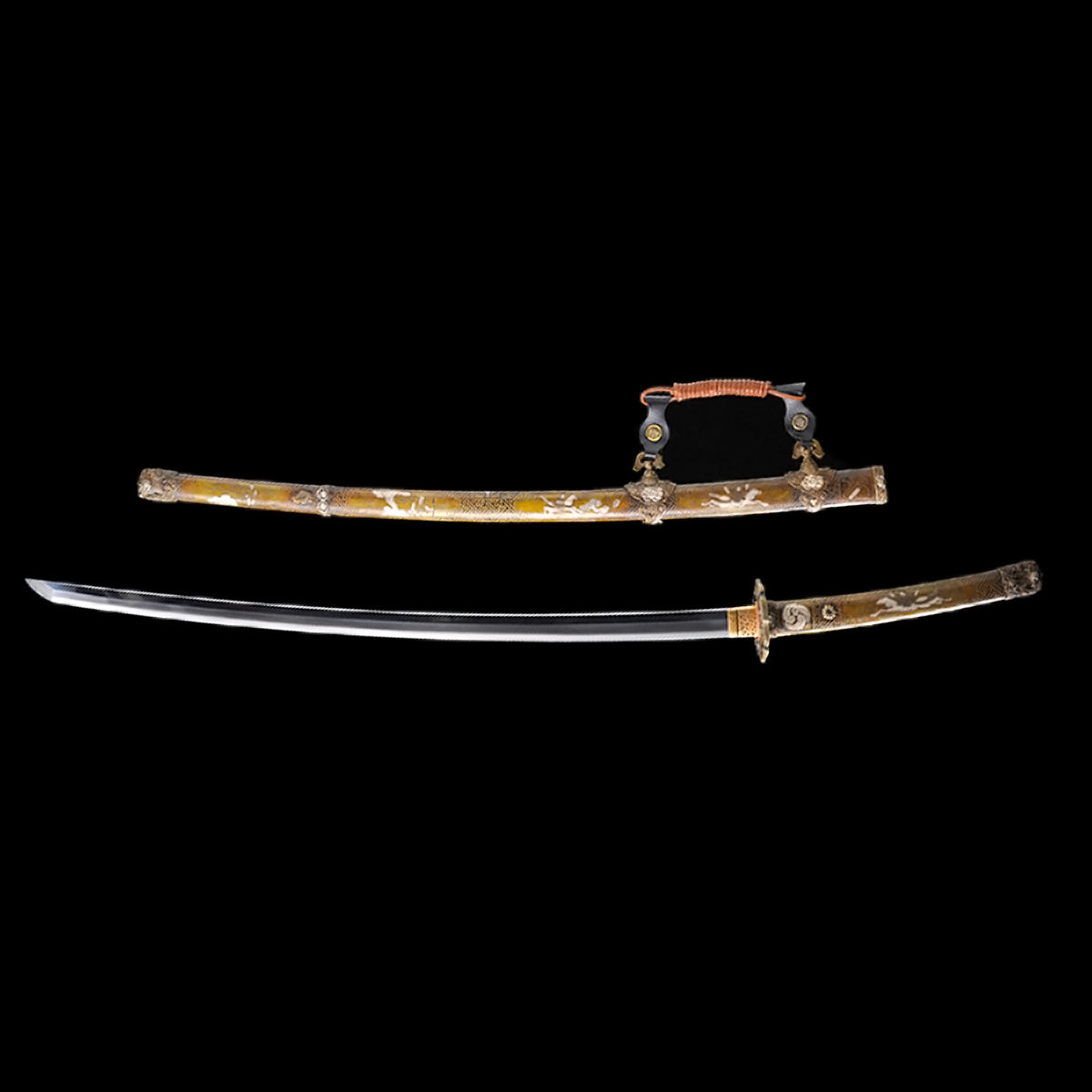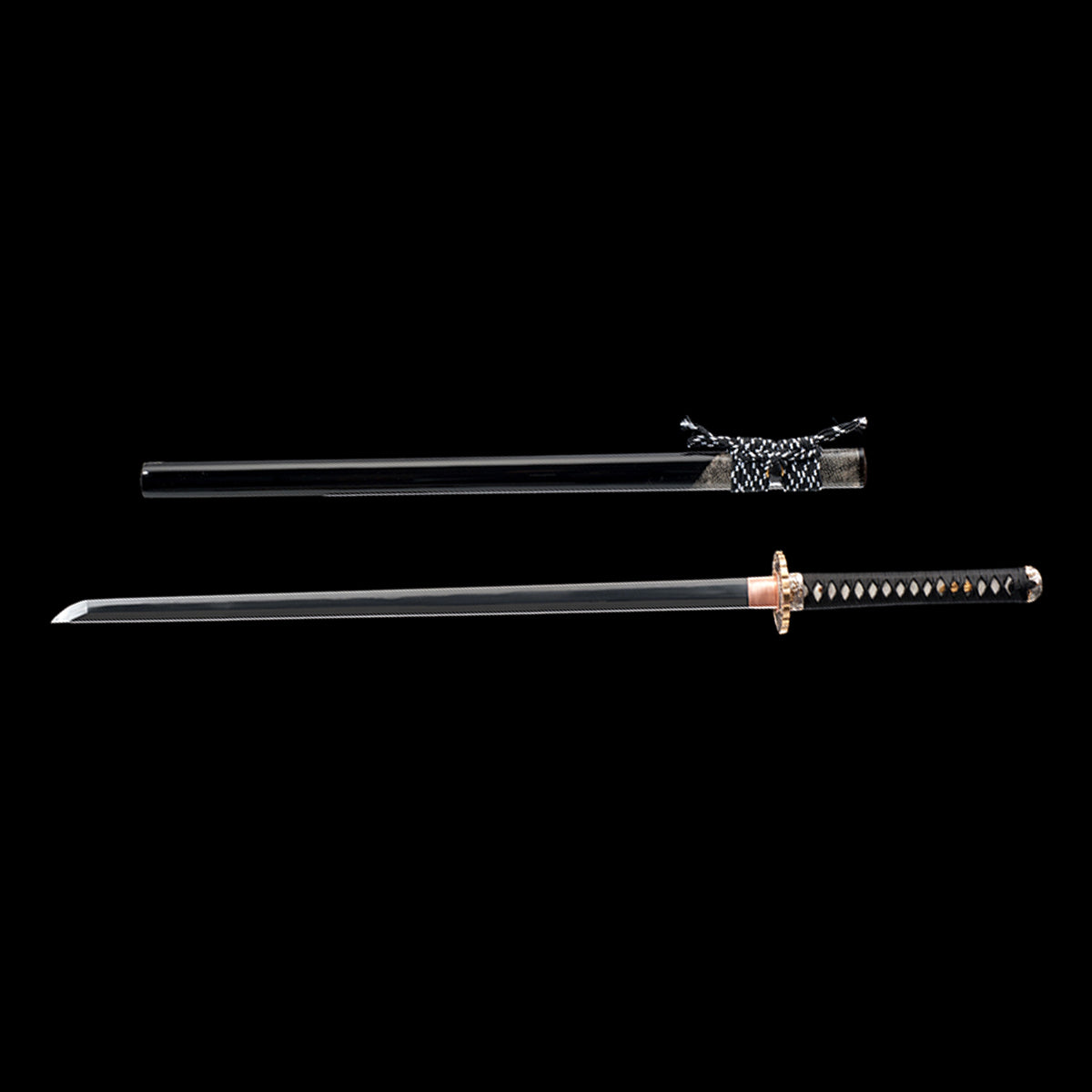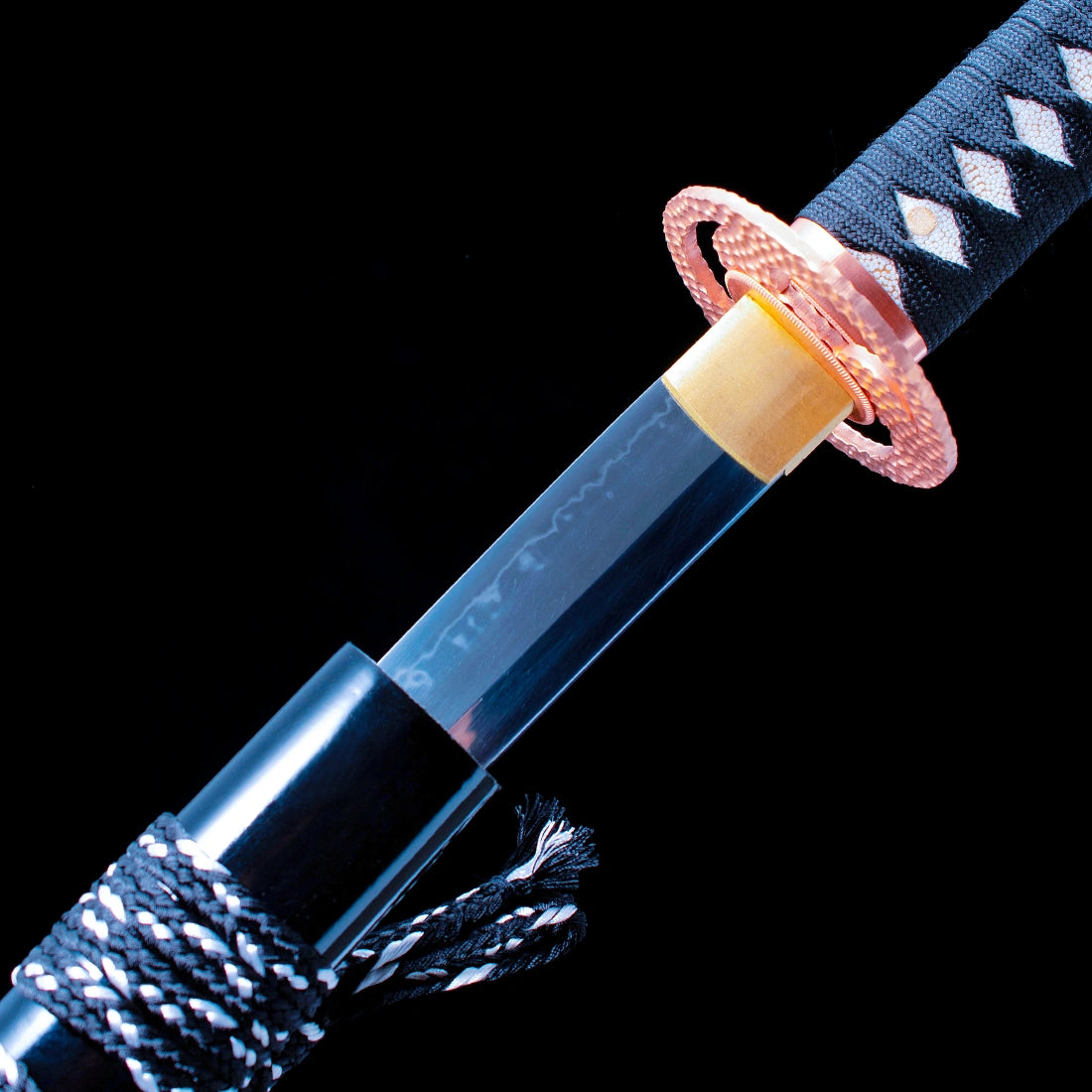FAQs
Why is Ninjato straight?
Why is Ninjato straight?
The "Ninjatō" and its Straight Blade: Demystifying a Modern Myth
The concept of a straight-bladed "ninjatō" (忍者刀) or shinobigatana (忍刀) is one of the most pervasive and misunderstood elements of ninjutsu folklore. From a historical and academic perspective, the straight ninjatō is almost entirely a modern invention, popularized by 20th-century cinema, manga, and popular culture. There is no physical or historical evidence to support the existence of a standardized, straight-bladed sword used by historical shinobi (the correct term for what the West calls "ninja").
However, the myth itself has a logical, though speculative, origin. The explanation requires separating historical reality from modern fiction.
1. The Historical Reality: The Myth of the Standard "Ninjatō"
- Lack of Physical Evidence: There are no surviving examples of a straight-bladed ninjatō in any museum, temple, or private collection that can be reliably dated to the shinobi's heyday (Sengoku or Edo periods). The vast collections of the Tokyo National Museum, the NBTHK Sword Museum, and other institutions contain nothing of the sort.
- Lack of Historical Documentation: Period manuals on shinobi arts (ninjutsu), such as the Bansenshūkai (萬川集海) or the Shōninki (正忍記), describe tools and tactics in great detail. They do not describe a unique, straight-bladed sword. Instead, they mention the use of standard weapons and tools.
- The Practicality of Disguise: A shinobi's primary weapon was invisibility and anonymity. Carrying a unique, easily identifiable sword would immediately compromise their cover. A professional operative would carry a standard, unremarkable weapon to blend in with samurai, farmers, or merchants.
2. The Tools of the Shinobi: Reality vs. Myth
Historical shinobi were pragmatists. They used and adapted existing tools.
- The Likely Armament: A shinobi operating in enemy territory would most likely carry:A standard katana or wakizashi with a deliberately aged or nondescript mounting to avoid attention.A shinobizue (忍び杖) – a disguised sword staff. This was a seemingly ordinary walking staff or pilgrim's staff that concealed a straight or slightly curved blade inside. This was the ultimate tool for infiltration, as it was a completely innocuous object that could be carried openly without suspicion.A tantō (短刀) – a dagger. Its small size made it ideal for concealment, utility work, and silent close-quarters combat.
- The "Ninjatō" Myth: The modern image of a straight blade with a square guard (tsuba) and an oversized scabbard (saya) used for breathing underwater or storing tools is a composite invention of postwar fiction. It provides a visually distinct prop that instantly signals "ninja" to an audience, much like a lightsaber signals a Jedi.
3. The Origin of the Straight-Blade Myth: Logical Speculation
Despite being ahistorical, the idea of a straight blade for shinobi has plausible, though speculative, roots:
- Ease of Manufactory: A straight blade is significantly easier and faster to forge than a curved one. Creating a functional curvature requires a highly skilled smith and a perfect differential hardening process (yaki-ire). A shinobi, who was often not a member of the wealthy samurai class, might have had access to cheaper, more crudely made straight blades. This is a logical assumption, but not one supported by extant artifacts.
- Thrusting vs. Cutting: A straight blade is inherently more optimized for thrusting attacks. In the context of shinobi work—which involved silent killing, penetrating armor gaps (yoroimusubi), and striking from concealment—a strong thrust would be more effective than a wide slashing cut. A straight blade is superior for this purpose.
- Concealment and Carry: A straight blade could be worn flush against the back, reducing snagging while climbing, moving through dense vegetation, or crawling. It could also be more easily concealed under clothing or within other objects.
- Utility Use: A straight blade is a more effective tool for prying, digging, or chopping than a curved one. As shinobi operations involved breaching and infiltration, a multi-purpose tool would be highly valuable.
4. The Historical Precedent: The Chokutō (直刀)
The only historical straight swords in Japanese history are the chokutō (直刀), which were used in the pre-Heian and early Heian periods (before ~900 AD). These were straight, double-edged blades based on Chinese and Korean designs. They were obsolete by the time the shinobi emerged centuries later. The myth of the ninjatō may have been loosely inspired by a romanticized and incorrect view of these ancient blades.
Professional Conclusion: The Definitive Answer
The "ninjatō" is not historically straight. The iconic straight-bladed sword is a modern pop-culture creation.
However, the idea of a straight blade for covert operatives is based on sound logical reasoning regarding practicality, economics, and tactical function:
- Easier to Make: A straight blade requires less forging skill.
- Better for Thrusting: More effective for silent kills and attacking armor gaps.
- Easier to Conceal: Less likely to snag and easier to wear flat against the body.
- Better as a Tool: More useful for prying and digging than a curved blade.
Historical shinobi were not uniformed commandos with standardized gear; they were spies and saboteurs who used whatever tool best suited the mission. They would have preferred to carry a common, unremarkable weapon that drew no attention. Therefore, while the straight ninjatō is a fiction, the pragmatic principles behind its imagined design are not without merit. The myth persists because it is a visually effective and logically intuitive symbol for the archetype of the covert agent.
Is a Ninjato a katana?
Is a Ninjato a katana?
The "Ninjatō" vs. The Katana: A Professional Analysis of Taxonomy and Myth
The short answer is no, a "ninjatō" is not a katana. However, this simple answer belies a complex issue of historical accuracy, modern pop culture, and terminology. To understand why, we must first define what each term represents within the field of Japanese arms and armor.
1. Defining the Katana (刀): A Historical and Cultural Object
The katana is a rigorously defined, historically authentic object.
- Definition: A curved, single-edged blade with a length (nagasa) of 2 shaku or greater (approximately 60.6 cm or 23.9 inches), designed to be worn thrust through the obi (sash) with the cutting edge facing upwards.
- Manufacture: Traditionally forged by licensed smiths using tamahagane steel through methods of folding, welding, and differential clay tempering (yaki-ire). This process creates the distinctive curvature and the aesthetic features of the hamon (temper line) and hada (grain pattern).
- Cultural Status: The katana was the soul of the samurai, a symbol of their social status, and a functional work of art. Its evolution, from the earlier tachi, is well-documented through surviving examples, smith lineages, and historical records.
- Authentication: Authentic katana are classified, certified, and valued by organizations like the NBTHK (Society for the Preservation of Japanese Art Swords) based on their age, smith, school, and artistic merit.
In essence, the katana is a cultural reality with a clear historical and metallurgical definition.
2. Defining the "Ninjatō" (忍者刀): A Modern Pop-Culture Construct
The "ninjatō" or shinobigatana is a term that refers to a weapon primarily defined by 20th-century media, not historical evidence.
- Popular Depiction: It is typically shown as a straight-bladed or nearly straight sword with a square guard (tsuba) and an oversized scabbard (saya) that could be used for breathing underwater or storing tools.
- Historical Reality: There is no physical or historical evidence for the existence of such a standardized weapon used by historical shinobi (the correct term for practitioners of ninjutsu).No Surviving Examples: No museum or temple in Japan holds a sword that can be verified as a "ninjatō" from the Sengoku or Edo periods.No Historical Records: Period manuals on ninjutsu (e.g., Bansenshūkai) describe the use of standard weapons and tools, not a unique sword.The Practicality of Disguise: A shinobi's survival depended on blending in. Carrying a unique, easily identifiable sword would have been counterintuitive. They would have used unremarkable, standard weapons like a katana, wakizashi, or tantō to avoid detection.
The "ninjatō" is therefore a cultural fiction, an invention designed to provide a visually distinct icon for "ninja" characters in film, manga, and video games.
3. The Core of the Confusion: The Shinobi's Use of Katana
This is where the lines blur and the confusion arises. Historical shinobi certainly did use swords—but they were almost certainly standard weapons of the era.
- A shinobi operating in disguise would carry a normal katana or wakizashi to appear as a samurai or a commoner with the right to bear arms.
- The mounting (koshirae) might be deliberately aged, rusted, or nondescript to avoid appearing valuable and drawing attention.
- The blade might be unpolished or dull, as its primary use would be for utility, silent killing (thrusting), and close-quarters combat rather than formal dueling.
Therefore, while a shinobi might have used a samurai sword, they did not use a weapon called a "ninjatō." They used a katana in the capacity of a shinobi.
Professional Conclusion: A Categorical Difference
The difference between a katana and a "ninjatō" is not a difference within the same category; it is the difference between history and myth, and between art and prop.
- The katana is a genuine Nihontō (日本刀) – a traditionally made Japanese sword, classified and studied as a cultural art object.
- The "ninjatō" is a modern replica or fictional construct inspired by a romanticized and ahistorical view of shinobi.
To ask if a "ninjatō" is a katana is like asking if a lightsaber is a rapier. They may share a superficial resemblance as "swords," but they belong to entirely different realms: one to history and metallurgy, the other to fiction and fantasy. A shinobi may have used a katana, but the weapon we call a "ninjatō" is a 20th-century creation that never existed in the way it is commonly depicted.
What is the difference between a Wakizashi and a Ninjato?
What is the difference between a Wakizashi and a Ninjato?
The Wakizashi vs. The "Ninjato": A Professional Analysis of Historical Fact vs. Modern Fiction
The difference between a Wakizashi (脇差) and a "Ninjato" (忍者刀) is one of the most stark contrasts in the study of Japanese arms. It is the difference between a rigorously defined, historically abundant cultural artifact and a modern, fictional construct with no basis in historical reality. Comparing them is not like comparing two types of swords; it is like comparing a documented antique to a movie prop.
1. The Wakizashi (脇差): A Defined Historical Object
The Wakizashi is a core component of Japanese sword classification and samurai culture.
- Legal & Formal Definition: A short sword with a blade length (nagasa) between 1 and 2 shaku (approximately 30.3 cm to 60.6 cm / 11.9 to 23.9 inches). This definition was codified during the Edo period.
- Historical Provenance: Thousands of authentic Wakizashi exist in museums, private collections, and temples worldwide. Their history is well-documented through smith signatures (mei), family records, and period art.
- Cultural Role: It was the companion sword in the Daishō (大小) pair, the exclusive symbol of the samurai class. It was used for close-quarters combat, ritual suicide (seppuku), and beheading defeated opponents. A samurai would remove his katana indoors but always retain his Wakizashi, ensuring he was never unarmed.
- Construction: Authentic Wakizashi are forged using traditional Japanese methods: laminated tamahagane steel, clay tempering (yaki-ire) to create a hardened edge (hamon), and a distinct curvature (sori). They are often signed by their maker.
- Authentication: They are classified and certified by authoritative bodies like the NBTHK (Society for the Preservation of Japanese Art Swords) with papers (Hozon, Tokubetsu Hozon, Jūyō) that confirm their authenticity, age, and quality.
In summary: The Wakizashi is a historically verified, culturally significant, and precisely defined short sword.
2. The "Ninjato" (忍者刀): A Modern Pop-Culture Construct
The "Ninjato" or Shinobigatana is a product of 20th-century popular culture, not Japanese history.
- Definition: A fictional sword typically depicted as a straight-bladed weapon with a square guard (tsuba) and an oversized scabbard (saya) used for breathing underwater or storing tools.
- Historical Provenance: None.No Physical Evidence: There is not a single verified example of this type of sword in any museum or historical collection in Japan. The Tokyo National Museum, the NBTHK Sword Museum, and all other reputable institutions hold nothing resembling it.No Historical Records: Period manuals on ninjutsu ("shinobi" arts), such as the Bansenshūkai (萬川集海), describe the use of standard weapons and tools (e.g., katana, wakizashi, shinobizue [disguised staff-swords]), but never a unique, standardized "ninja sword."
- Origin of the Myth: The image was created and popularized by post-WWII Japanese cinema (jidaigeki films), television, manga, and video games. It serves as a convenient visual icon to instantly identify a "ninja" character, much like a lightsaber identifies a Jedi.
- Construction: Any "Ninjato" available for purchase today is a modern replica. They are mass-produced using non-traditional methods (e.g., machine grinding, monosteel, oil quenching) for the decorative or martial arts novelty market. They have no artistic or historical value as Nihontō.
In summary: The "Ninjato" is an ahistorical invention with no basis in the material culture of historical shinobi (pre-20th century covert agents).
What Historical Shinobi Actually Carried
This is the most crucial point of clarification. Historical shinobi were pragmatists, not uniformed fantasy warriors.
- Standard Weapons: To avoid detection, a shinobi would carry a completely normal, unremarkable katana or wakizashi. The mounting might be deliberately aged or rustic to avoid drawing attention. The goal was to blend in, not stand out with a unique weapon.
- Disguised Tools: The most common specialized tool was the shinobizue (忍び杖) – a straight or curved blade concealed within a walking staff, pilgrim's staff, or even a flute. This was the ultimate infiltration tool, as it was an innocuous object that could be carried openly.
- Daggers & Tools: They would carry tantō (daggers) and a variety of utility tools (shinobi no mono), not a single, all-purpose "ninja sword."
Conclusion: The Fundamental Difference
The difference is not merely in their shape or size. The difference is ontological.
- The Wakizashi is a documented historical object with a defined role in samurai society, law, and culture. It is a subject of academic study.
- The "Ninjato" is a modern artistic trope created for entertainment. It is a subject of media studies, not history.
They belong to entirely separate categories. Comparing them is valid only for the purpose of dispelling myth and clarifying the historical record. The Wakizashi is real; the "Ninjato" is not.
Are Ninjato swords legal to own?
Are Ninjato swords legal to own?
The Legality of "Ninjatō" Swords: A Jurisdictional Analysis
The question of whether a "ninjatō" is legal to own requires a precise understanding of what the term refers to and how it is classified under various legal systems. The legality is almost entirely dependent on the sword's method of manufacture and the specific laws of your country, state, and city.
It is critical to first define the object in question. A "ninjatō" is a modern, non-traditional replica sword inspired by popular culture, typically characterized by a straight blade, a square guard (tsuba), and an oversized scabbard.
1. The Critical Legal Distinction: Traditional Art vs. Modern Weapon
The single most important factor in determining legality is how the sword was made. Global legal systems make a fundamental distinction between:
- Traditionally Made Japanese Swords (Nihontō): These are blades hand-forged in Japan using traditional methods (laminated tamahagane steel, clay tempering, water quenching). They are classified as cultural artifacts or art objects. This category includes katana, wakizashi, tantō, and tachi.
- Modern Replicas / Non-Traditional Swords: This includes "ninjatō," factory-made katana replicas, and any sword made using modern methods (e.g., machine grinding, monosteel like 1045/1060 carbon steel, oil quenching). These are classified as weapons or dangerous goods.
The "ninjatō," by its very nature as a modern pop-culture invention, falls exclusively into the second category. There are no traditionally forged, antique "ninjatō."
2. Jurisdiction-Specific Legislation
The legality of owning a modern replica "ninjatō" varies dramatically around the world.
A. United States:
- Federal Law: There is no federal law prohibiting the ownership, purchase, or sale of any type of sword, including "ninjatō," for adults.
- State and Local Laws: This is where restrictions exist. Laws are a complex patchwork:Most States: Ownership is legal without restriction (e.g., Texas, Florida, Ohio).Restrictive States/Cities: Some jurisdictions have laws specifically targeting "samurai swords" or martial arts weapons.New York State: Generally permissive, but New York City has a specific administrative code (§ 10-133) that bans the possession of a "katana" in public. Keeping one at home is legal.California: Penal Code § 20510 prohibits the importation and sale of "undetectable knives" and certain swords, but private ownership is generally legal.The term "ninjatō" is rarely specified in law; it would be grouped under generic terms like "sword," "martial arts weapon," or "katana."
B. United Kingdom:
- The UK has some of the strictest laws and serves as an important case study.
- Criminal Justice Act 1988 (Offensive Weapons) Order 1988: This law banned the importation, sale, and manufacture of "curved swords" with a blade over 50cm (~19.7 inches).
- The Exemption: The law contains a critical exemption for "hand-made Japanese samurai swords" made in Japan by traditional methods before 1954 or by a licensed smith thereafter.
- Implication for "Ninjatō":A "ninjatō", being a modern replica, is NOT made by traditional Japanese methods.Therefore, it is ILLEGAL to import, sell, or manufacture a "ninjatō" in the UK.Ownership of one that was already in the country before the law may be a legal grey area, but its sale and import are definitively banned.
C. Australia:
- Laws are strict and vary by state. Importing any sword typically requires a permit from police.
- Ownership usually requires a "genuine reason" (e.g., membership in a martial arts society, historical reenactment group, or collection). A "ninjatō" would be classified as a controlled weapon.
- Simply owning one for decorative purposes is often not considered a valid reason, making ownership difficult and often illegal without a permit.
D. Canada:
- Generally permissive. Swords are not classified as prohibited weapons. Ownership is legal, though carrying them in public could lead to charges of possessing a weapon for a dangerous purpose.
E. Japan:
- Firearm and Sword Possession Law (銃刀法): This law strictly prohibits the possession of any sword that is not certified as a "Art Sword" or of significant historical value.
- A modern replica "ninjatō" has no cultural status and is illegal to possess in Japan without a special permit, which is very difficult to obtain. This law is designed to protect the cultural value of real Nihontō and curb violence.
3. Key Factors Influencing Legality
When determining legality, authorities and laws consider:
- Method of Manufacture: As detailed above, this is the primary factor.
- Blade Material: In some jurisdictions, zinc/aluminum alloy "wall hanger" replicas with dull edges may be treated differently from functional, sharpened carbon steel blades.
- Intent: Laws often consider intent. A sword stored in a collection is viewed differently from one carried in public.
- Local Ordinances: Even within a permissive country, city or county laws can be more restrictive than state or federal law.
Synthetic Summary: The Answer
Is it legal to own a "ninjatō"?
- In most of the United States: Yes, ownership is generally legal for adults, but you must check your specific state and city laws.
- In the United Kingdom: No. The importation, sale, and manufacture are illegal.
- In Australia: Probably not, without a very difficult-to-obtain permit demonstrating a "genuine reason."
- In Canada: Yes, ownership is generally legal.
- In Japan: No, possession is illegal.
Professional Recommendation: Before purchasing any sword, especially a modern replica like a "ninjatō," you must conduct thorough research on the specific laws in your city, county, and state/province. Do not rely on the word of sellers or online forums. When in doubt, contact local law enforcement for clarification. Legality is based on the law of your jurisdiction, not the name or style of the sword.
What is another name for the Ninjato?
What is another name for the Ninjato?
The Nomenclature of the "Ninjatō": Dissecting Fact and Fiction
The term "Ninjatō" (忍者刀) is, itself, a modern appellation. Within the field of Japanese arms and armor studies, there is no historical or traditional "other name" for this weapon because the weapon, as commonly depicted, did not exist in historical reality. Therefore, any alternative names are either modern synonyms, descriptive terms, or refer to entirely different tools that are often mistakenly conflated with the pop-culture "ninjatō."
It is crucial to understand that the straight-bladed, square-guarded sword is a 20th-century invention for film and television. Historical shinobi (the correct term for practitioners of ninjutsu) used standard weapons of their era.
1. The Primary Modern Synonym: Shinobigatana (忍刀)
The most direct and common alternative name is Shinobigatana (忍刀).
- Breakdown:Shinobi (忍): Meaning "to steal away" or "to hide," the root of the word ninjutsu.Gatana (刀): The voiced form of katana, meaning "sword."
- Translation: "Shinobi sword" or "stealth sword."
- Usage: This term is completely interchangeable with "ninjatō" in modern pop culture. It carries the same meaning and refers to the same fictionalized weapon. It is not more "authentic" than "ninjatō"; both are retroactive terms applied to a modern concept.
2. Descriptive and Functional Modern Terms
These are not names but descriptive phrases used in modern martial arts supply catalogs or among enthusiasts to describe the type of sword.
- Straight Ninja Sword: A purely descriptive English term highlighting the blade's straightness, its most defining (and ahistorical) visual characteristic.
- Shinobi Zukuri: (忍び造り) meaning "shinobi style" or "shinobi construction." This is a modern term used by some replica manufacturers to describe a sword built to the pop-culture "ninjatō" specifications (straight blade, square guard, etc.). It has no basis in historical Japanese sword-smithing terminology.
3. Historical Tools Often Mistakenly Linked to the "Ninjatō"
This is where significant confusion arises. People often point to the names of actual historical tools used by shinobi, mistakenly believing they are alternative names for the "ninjatō." They are not. They are distinct objects with their own definitions.
- Shinobizue (忍び杖) - "Shinobi Staff":What it is: This was a far more common and practical tool for a shinobi than a unique sword. It is a straight blade (which could be a wakizashi or tantō blade) concealed within a seemingly ordinary staff, walking stick, or even a flute.Why it's confused: The internal blade was often straight, which links it visually to the straight "ninjatō" myth. However, the shinobizue is a concealed weapon, not a openly carried sword. It was the ultimate infiltration tool because it was invisible. This is the weapon most likely to have inspired the fictional "ninjatō."
- Chokutō (直刀) - "Straight Sword":What it is: A historical straight, double-edged sword used in Japan's very early history (pre-Heian period, before ~794 AD), based on Chinese jian designs. They were obsolete centuries before the heyday of the shinobi.Why it's confused: Its straight blade is visually similar to the fictional "ninjatō." However, the chokutō is an antique art object with no functional connection to shinobi.
- Kunai (苦無) - Utility Tool:What it is: A multi-purpose pointed tool, originally a masonry trowel or prybar, used by shinobi for digging, prying, climbing, and as an impromptu weapon.Why it's confused: Modern media often depicts kunai as throwing weapons or as equipment for "ninjas," leading to its association with the "ninjatō" mythos. However, it is a tool, not a sword.
Professional Conclusion: There Are No Authentic "Other Names"
To provide a direct answer: the most common other name for the modern pop-culture "ninjatō" is Shinobigatana (忍刀).
However, the more academically rigorous answer is that there are no historical alternative names for the "ninjatō" because the weapon itself is a modern construct. The search for another name is a search for authenticity where none exists.
The historical shinobi did not carry a standardized, unique sword. They used:
- Standard katana and wakizashi (often with deliberately nondescript mountings to avoid attention).
- Shinobizue (concealed staff-swords).
- Tantō (daggers).
- A variety of tools like the kunai.
The term "ninjatō" and its synonym "shinobigatana" were created in the 20th century to provide a visual shorthand for filmmakers and authors—a distinctive weapon that would instantly signal "ninja" to the audience. It is a powerful and enduring icon of popular culture, but it remains just that: a cultural icon, not a historical artifact. Therefore, its names are also products of that modern culture, not of history.

